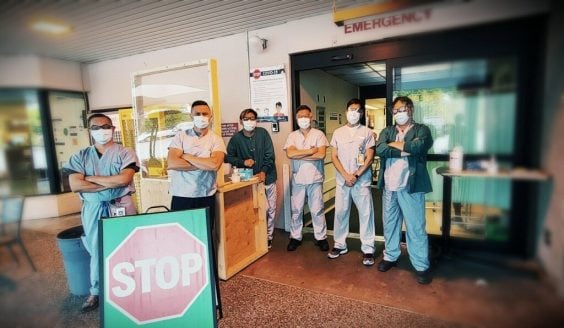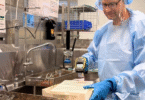Emergency Department nurses are the first point of contact for people seeking care urgently – a time where they may be at the lowest point in their lives, often between life and death.
On this Emergency Nurses week, we share stories of the experiences of ED nurses at Providence Health Care’s St. Paul’s and Mount Saint Joseph Hospitals and why they chose this challenging specialty.
All photos except the group shot by Brian Smith, PHC.
Registered Nurse Artur Niziolek is a few hours into his 12-hour shift at St. Paul’s ED. Among the many things he has done is administering shocks to stabilize the severely irregular heartbeat of a patient.
Later, he rushes to the bedside of a patient slipping in and out of consciousness. Other nurses and doctors converge on the patient to diagnose and treat. Monitors beep. Intravenous lines are inserted.
The man is then moved to a trauma room in the ED, where Niziolek and more colleagues suit up in protective clothing to treat him more intensively, under airborne precautions – gowns, N95 masks and closed glass doors.
To the observer, it is non-stop activity.
To Niziolek, it’s an average shift at this downtown Vancouver ED, which can see up to 250 patients each 24 hours.
Each day different for Providence Health’s ED nurses
He loves it.
“It’s a fast-paced team environment, where each day is different and you get a mix of everything.”
In fact, Niziolek, who started at St. Paul’s ED in 2014 as a Registered Psychiatric Nurse in the Acute Behavioural Stabilization Unit, decided to return to school to become an ED nurse. “I watched my colleagues, learned what they do and saw they had such a variety of medical skills.”
Variety is the word for ED nurses at St. Paul’s and Mount Saint Joseph Hospital. They see stroke patients, overdoses, obstetrical emergencies, falls, stabbings. Once a patient was rushed off a cruise ship in massive cardiac arrest. (St. Paul’s is the provincial Heart Centre.)
Substance-use and mental-health cases are sadly more common at this downtown ED due to the opioid overdose public-health crisis.
Jessica Bilkey is a relative newbie to St. Paul’s. She started two years ago. Today, she’s supporting triage (categorizing patients according to the severity of their case) and will cover areas of the department where the needs are highest.
At one point, she’s called to insert an IV line into an extremely ill patient whose blood vessels can’t be located by sight. She expertly rolls a special ultrasound machine by his bed to find one that way.
She, too, landed on ED nursing because of its rapid pace and team-based approach. “I wanted to be a part of the initial stabilization of patients before they are transferred to the next care area.”
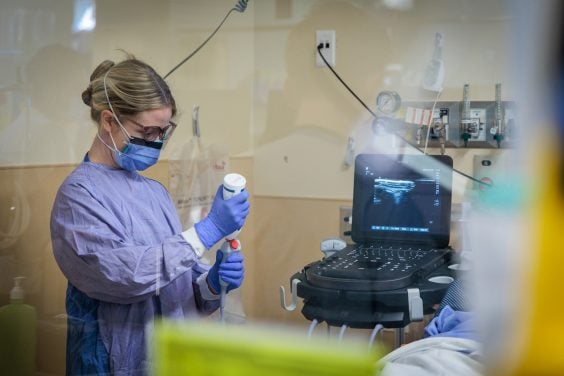
ED nurses like her also administer drugs, insert catheters and gastric tubes into patients and draw blood.
ED nurses are “competent generalists”
The list of cases she sees is long: mental-health and substance-use crises and related behavioural issues, septic shock, substance overdoses, blocked cardiac arteries, chest pains. “Emergency nurses need to be competent generalists,” she observes.
They are also multi-skilled within their Emergency Nurse role. Some might have extra training in geriatrics, triage and psychiatry – all important to Providence given some of the specific patient groups, like the elderly and mental-health patients, that it serves.
ED nursing team managed well during COVID-19
Because St. Paul’s doesn’t get many trauma cases like car accident patients, where the problem is obvious, diagnosing can demand lots of critical thinking and process of elimination.
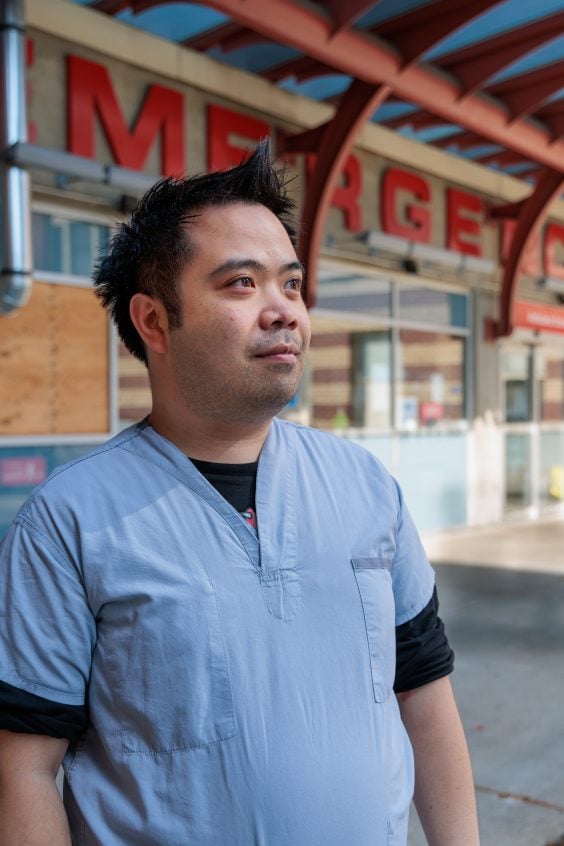
Nino Villamente, Clinical Nurse Manager at Mount Saint Joseph’s ED, loves that complexity along with “the individuality of patients being treated in the emergency.”
Francis Tenorio, the ED’s clinical nurse educator who does both clinical work and training, agrees. “Patients come in thinking they have one thing. But after we do tests, it could be a completely different problem.”
Viviana Vargas is the elder stateswoman of the St. Paul’s ED. She has 25 years of emergency nursing experience, 17 at this hospital. She’s close to retirement and has seen it all.
She is calm and professional. When she relieves the triage nurse at the ED reception, she slips seamlessly into the role. “Are you here to see a doctor?” she asks the young woman who approaches her, then types information into the computer.
She also works closely with paramedics who relay symptoms of their patients brought in by ambulance. “Blood pressure?” Vargas asks him. “Any cough? Heart rate?”
“You have to be a special person to be an ED nurse because you are taking care of a person you barely know.” She loves the adrenaline rush of the ED and the wave of happiness when a case ends well.
Even during the unprecedented COVID years, she says the team was exceptional. “We managed really well.”
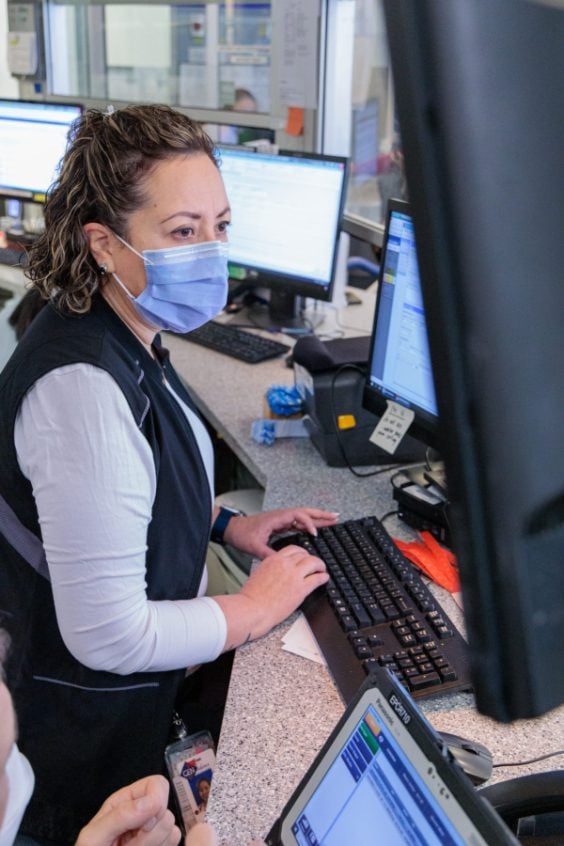
All the nurses who shared their stories speak of the need to be quick on your feet, able to communicate clearly, and flexible. “We work in a rapidly changing environment that does not allow for control,” says Bilkey.
Because of the hectic environment, where doctors, nurses, paramedics and students buzz about (St. Paul’s is a teaching hospital) and up to 30 patients can be waiting for care, “you need to manage your emotions,” says Vargas.
Expectations of a complex system
Emotional regulation is important when nurses confront aggressive behaviour. “I think the public would be surprised to learn about the amount of verbal, emotional and physical violence we deal with on a daily basis,” says Niziolek.
Tenorio has been called names too. “Sure, you can try to have a thick skin but you’re still a human being.” His team helps in those moments, asking how he is or suggesting he take a moment to regroup.
Dagmar Knot has worked at St. Paul’s ED and often receives geriatric patients referred to her. She loves the pace of work and her colleagues. But the public’s unrealistic expectations of a complex health-care system with limited resources for needy patients can be disheartening. “We are on the front lines of social disparities.”
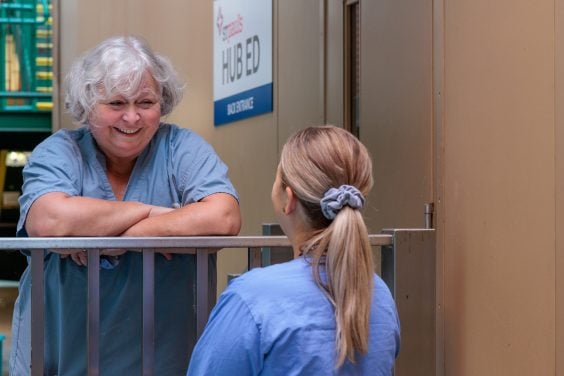
Tenorio agrees. Asked about the most dramatic cases he’s seen, he refers to patients from the nearby Downtown Eastside. “These are patients who have been neglected medically and live in filthy conditions.” The limits to what an ED can do are frustrating.
“My second home”
On the flip side, there is jubilation when the team can celebrate wins together – a baffling case is diagnosed, the patient receives treatment and can finally go home.
Vargas attributes that to her colleagues.
“I love this place,” she says. “We’re a big family. It’s like my second home.”
